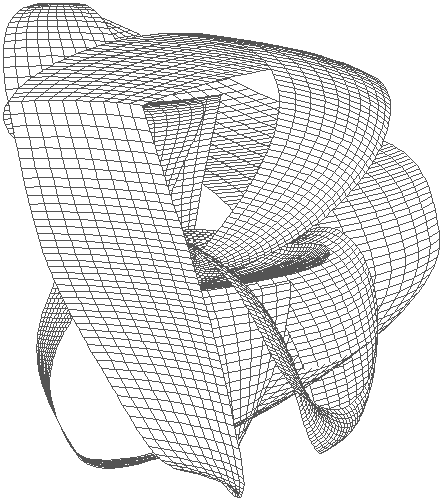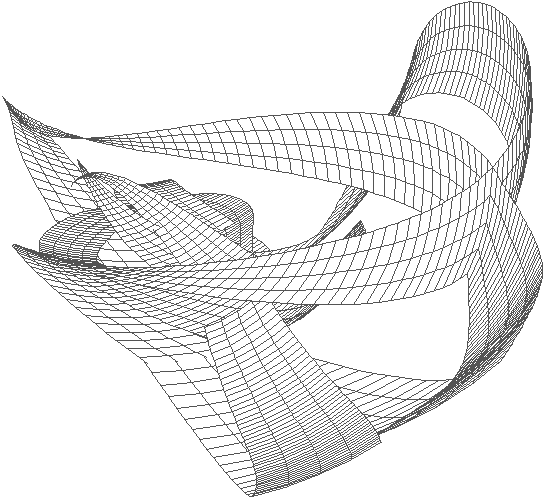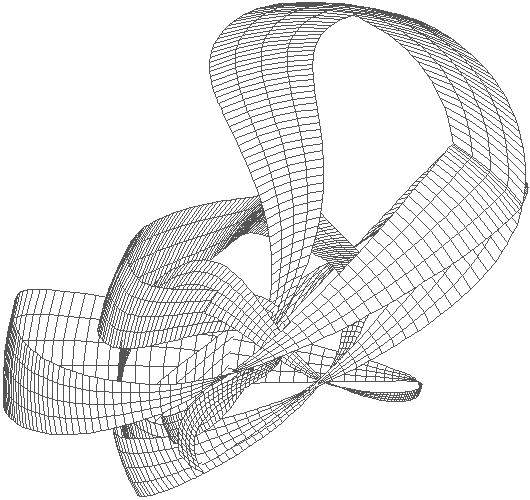2001.11.30
ideas
...interpretation of the Ichnographia via The Art of Memory as exercised by the ancients. The Ichnographia as placement of memory, and memory as progenitor of reenactment.
2001.12.04 11:36
Piranesi Prison dates, etc.
In "Notes From Underground" Berman incorrectly dates the Imaginary Prisons of Piranesi. Instead of 1745 for the first state and 1761 for the second state, 1749-50 is the correct date for the first state, as is 1761 for the second state. Thus Piranesi was between 29 and 30 years old when he first published the Invenzioni Capric. Di Carceri (Fanciful Images of Prisons).
Relative to Piranesi's other publications up to 1749, it is interesting to note that the Carceri are not dedicated and/or not commissioned, meaning they are works executed of Piranesi's own volition (a relative rarity in Piranesi's complete oeuvre). Moreover, it is worth comparing the Carceri with Piranesi's first published work, the Prima Parte Di Architetture (Part One of Architecture and Perspectives: Imagined and Etched by Gio. Batt.a Piranesi). The Prima Parte, published in 1743 when Piranesi was 23 years old, can easily be considered Piranesi's initial design portfolio.
Observed together the Prima Parte and the Carceri manifest a double theater where the first "play" is inversely reflected in the second "play". (Note too that the second "play" comes with two "acts".)
2001.12.04 12:26
Re: TX2/Plato's Spelunking
...wondering if there are other "memory places" being created out there.
2001.12.04
ideas
1. the notion of a publication entitled Post-Quondam Architecture which comprises crazy model collisions, etc.
2001.12.09 11:05
Re: Plato's Cave
Theatrics Times Two, too
This just might be the place where "illusion reenacts its realistic mirror."
2001.12.10 13:12
land of truths?
...the recent phrase "and not a oak tree to be seen, less, land of oak trees" has resonated in my mind since reading it. Albeit sad, its truth can hardly be disputed. It really does make one think about what's real and what isn't. For example, does Philadelphia ever truly live up to it's name which means brotherly love? Or does New York have much to do with Old York (which I assume is York, England)?
Quite by accident (on Friday) I found a new book entitled The Geometry of Love by Margaret Visser. This book is all about the church St. Agnes Outside the Walls, Rome. Visser essentially describes every aspect of the church, and in so doing delivers an amazing portrait of a single place and all its (space/time) meaning.
In yesterday's NYTIMES, the article about Philadelphia's new concert hall begins with describing Philadelphia as "a city that time often seems to have forgotten." Maybe I should start referring to myself as Steve, from Tempobliviopolis.
| |
2001.12.13 16:26
Re: egoscrapers
Try first watching The Ruling Class and then watch The Belly of an Architect. The former most entertainingly depicts the double theater of freedom and control, while the latter architecturally (and somewhat boringly) depicts the double theater of delusion and grandeur (or is that what The Ruling Class depicts, and vice versa?).
[Be on the look-out for the Electromagnetic Messiah is The Ruling Class--he's a pure joy. And then, in The Belly of an Architect, spy how Boullee is nakedly reduced to the phallacy of it all.]
ps
Allen's Deconstructing Harry is likewise great double theater, as is the sad 'reality' of The Legend of Rita. Now it's time to watch Mary, Queen of Scots. Or should it next be Women in the Verge of a Nervous Breakdown?
2002.01.02 16:56
[back from Rome]
Thanks for the pics so far.
Funny what shape such a modern icon is in.
I see what you mean about the edges of the facade. Very interesting, especially since it seems to be such an "unknown" aspect of the building, yet such a "radical" (for lack of another word right now) aspect of the building.
I'm trying to think of what Venturi et al building the detail reminds me of. There is the New Haven Firehouse (which might be the real connection), but isn't there some more recent building/design?
Looking forward to more pics.
2002.01.03
ideas
4. ...what the Starlux really reenacts.
6. outer spatial architecture
2002.01.07 19:53
Re: i-mac-thematica?
What exactly is so good about the design of a product, in this case the "new" iMac, that manifests the wholesale continuance of planned obsolescence? Something that exists almost entirely for the purpose of making "the same" something obsolete, and hence disposable, should not be considered "good design".
But if you insist on it, i.e., the new iMac, being good design, then you automatically also have to concur that today's iMac is the near future's trash. Yes, good design today almost always becomes trash.
2002.01.09 10:31
gehry/scharoun
I think there is an interesting correlation between the evolution of Frank Gehry's architecture and the evolution of Frank Stella's art. Neither does things just to be different. Rather, whatever 'style' is current is also a next step relative to what 'style' came before. Both artists have taken progressive steps with their works, steps that lead to ever freer use of form(s). Thus their 'expressionism' is not at all a free-for-all.
Judging from my own art/design experience/work, one has to know/do-it-by the rules in order to begin moving beyond the rules. And once you've gotten beyond the 'rules, then you work to understand the 'new rules' in order to begin understanding how to go beyond them. And on and on it goes.
| |
2002.01.09 12:15
learning from CAD and Stella
When I was CAD system at the University of Pennsylvania's Graduate School of Fine Art, I became acquainted with many of the landscape architect students, as they were the only students seriously learning CAD at the time, while most of the architecture students, or their teachers at least, saw very little use for CAD. The landscape students didn't use CAD so much for design, however, rather they utilized CAD for mapping integrated with data. Nonetheless, I remember when many of the landscape architect students were also busy working on a landscape design project for Battery Park City in New York. It was a challenging design project, and many of the students were having difficulties coming up with satisfactory solutions. I decided to quickly draw up my own design, which I did by hand in about two minutes, and hung the result on one of the computer room walls where I was sure the landscape architect students would see it. One of the students subsequently left a note on the drawing/design: "I fear computers have made us think we are more creative than we actually are!"
In retrospect, it was indeed CAD that made me more creative, or at least freer with form. It was also in the mid-1980s that I began to become aware of Frank Stella's work current at that time, particularly his 'Circuit' and 'Cones and Pillars' series.
As far as my design is concerned, it was the centerpiece sculpture that the landscape students most liked, i.e., a rectangular platform the size of the largest public elevator within the World Trade Center towers, and on this platform were as many life-size nude sculptures as it would take to fill it, like a crowded elevator, and trailing from this platform was a line of single nude sculptures meandering through the site and on into the Hudson River beyond.
2002.01.14
Quondamopolis
Quondamopolis
The unreal architecture of [Quondam] and other aliases.
2002.02.08
ideas
1. 88 houses of ill-repute; start with the Porticus Neronianae (circle/square); playful appositions.
12. ...refilling North Philadelphia with housing... ...stop the further suburbanization of North Philadelphia. ...introducing non-repetitive plot sizes and shapes, and an initial layer of "infrastructural ruins"--built elements that are meant to last for centuries, and that will accommodate any variety of "add-on" architecture.
2002.03.06 15:06
Re: Tate Modern Fate Pitied
It seems truly ironic that a building renovation that will no doubt go down in history as a great (art)work of architecture might be not at all good for that which it was (re)designed. In other words, how weird is contemporary architecture culture when an art museum is deemed a great work of art, yet at the same time isn't at all good as an art museum?
I'm thinking more and more lately that what architecture really needs these days is more and more good whistle blowers.
| |
2002.03.13 11:36
Re: Managing Email Lists
...the nature of design itself is always a play with and/or against limits. There are always limits, even within the most free environments, but limits are pushable and stretchable, just like they can resist or snap back when pushed very hard, and sometimes stretched limits can snap back so hard that they actually propel.
"All reality is relative to the vastness of its container."
2002.04.03 09:37
[art] being/appositional [to architecture]
Is it correct to think of art as being largely appositional to architecture?
I'm not only thinking of how painting and/or sculpture and/or electronic display screens, etc. are added layers to architecture, which in turn manifest a 'new' entity, but I'm also thinking/wondering about the 'art of architecture' also being appositional to architecture itself.
This leads to now wonder if electricity (and other utilities) might also be (rightly) considered as appositional to architecture.
Conversely, is it (ever) possibly for architecture to be appositional to art? Or is it (ever) possible for architecture to be appositional to electricity?
2002.04.03 10:49
Re: [art] being/appositional [architecture]
Beyond that, the questions I raised here yesterday involve the notion that architecture (over the ages) has largely been apposed with other art forms or with other engineering forms. I thought it would be interesting to openly discuss what those 'other' yet directly near applications are or are not, and how the appositions change or don't change the 'original' layer. For that matter, identifying what the original layer is may also evoke interesting positives and negatives.
2002.04.03 16:48
Re: [art] being/appositional [architecture]
Do you think there might also be such things (in design) as "difficult appositions"?
If so, any "good" examples? And/or is coming to grips with "difficult appositions" something designers should be aware of or be willing and/or able to deal with?
2002.04.14 10:44
dossiers/surfaces
www.quondam.com/dossiers/surfaces
Surfaces within Quondam's collection refers to those data files generated by specific CAD capabilities regarding mesh surfaces, linear extrusions, and rotational extrusions. When utilized in an orthodox manner, CAD's extrusion commands produce an endless variety of recognizable shapes, yet the same CAD commands, when used in an unorthodox manner, not only produce an endless variety of shapes and surfaces, but, moreover, produce shapes and surfaces that for the most part cannot be mentally imagined prior to the computer operations. It is these otherwise unimaginable resultant surfaces, along with the techniques that create them, that are here displayed.
My particular favorites so far are at:



|